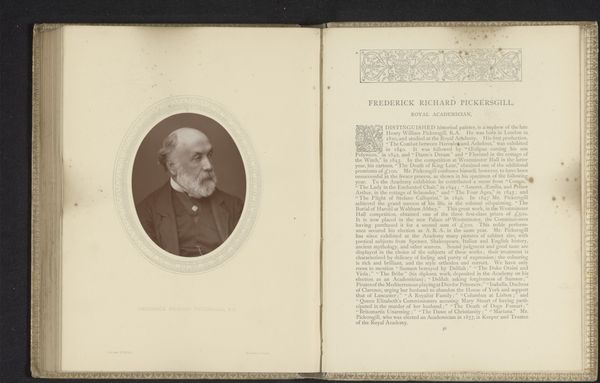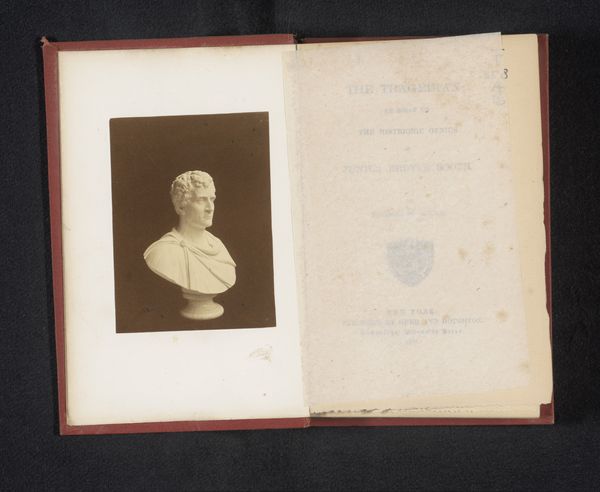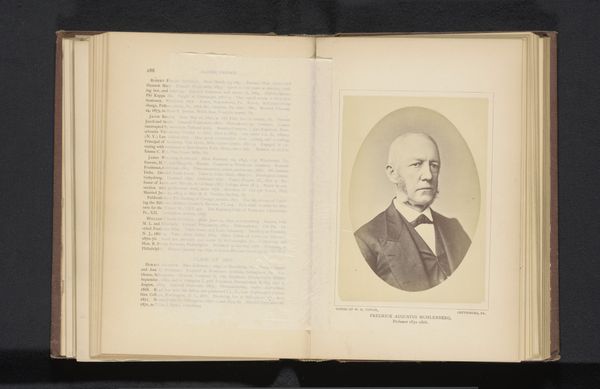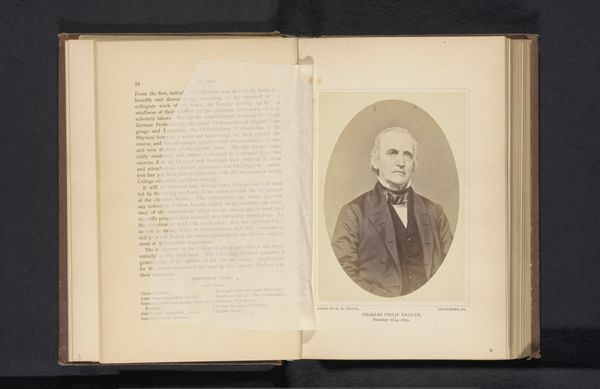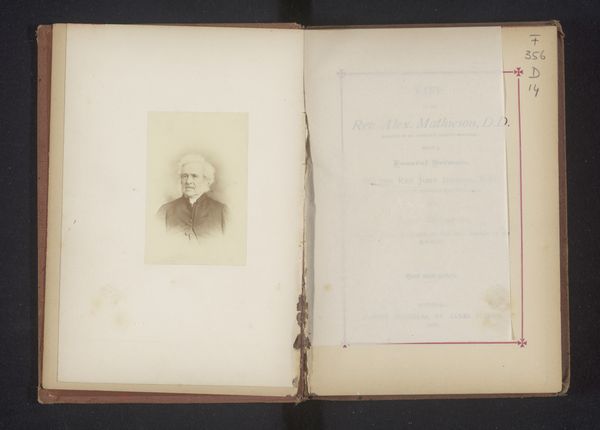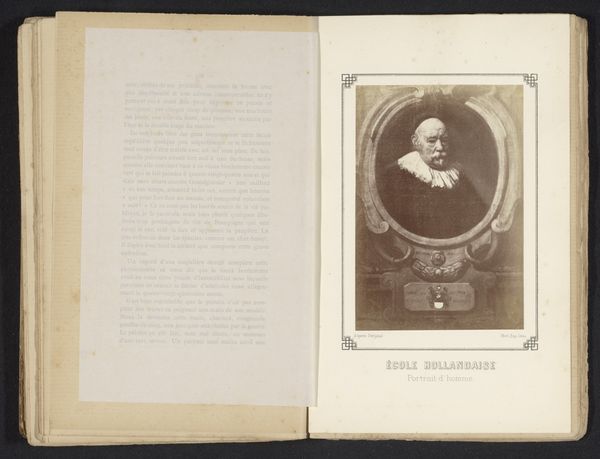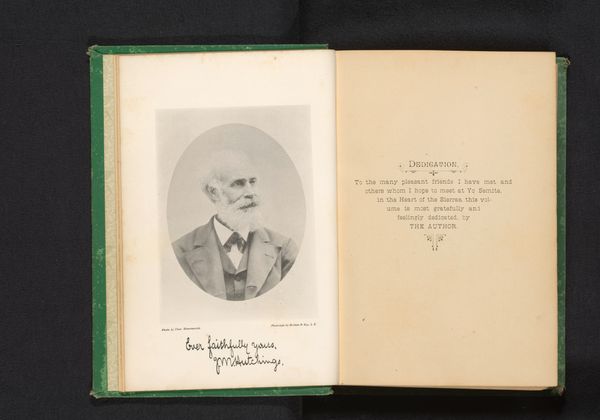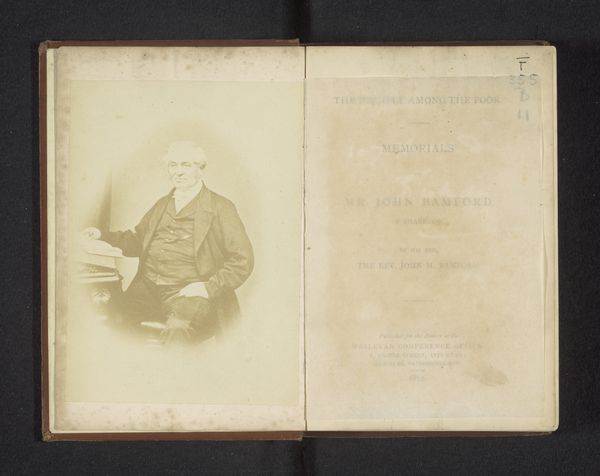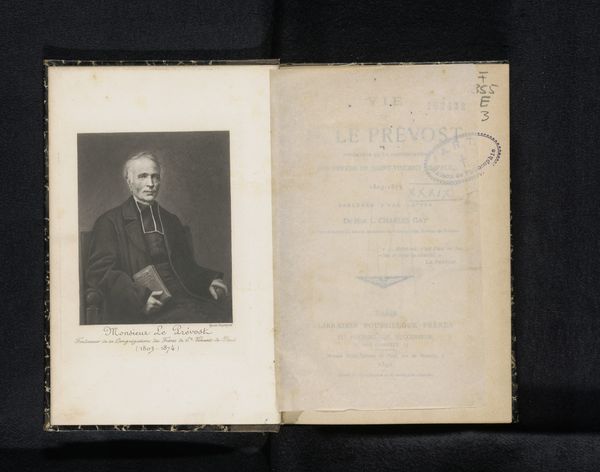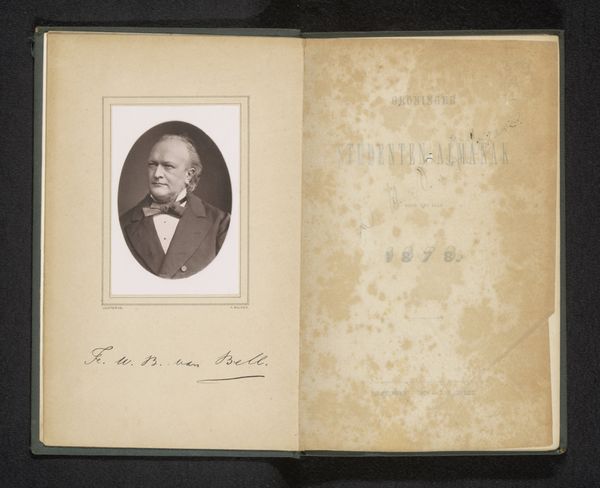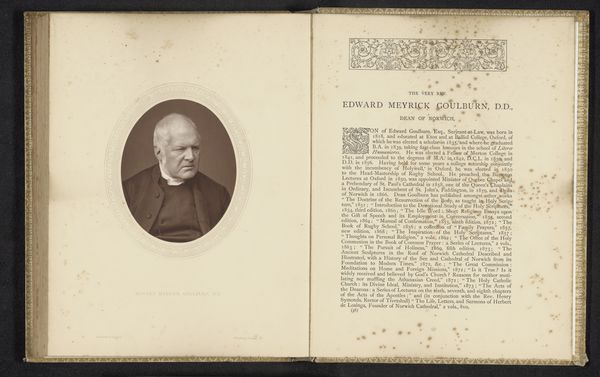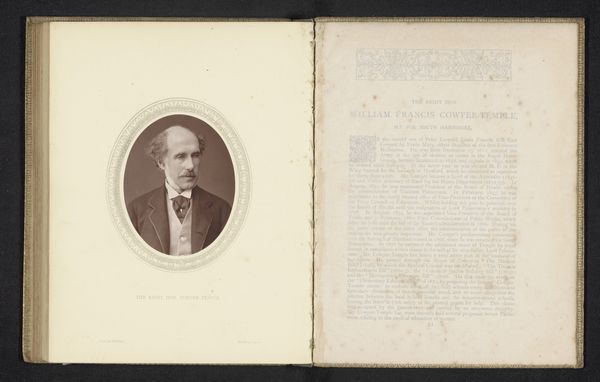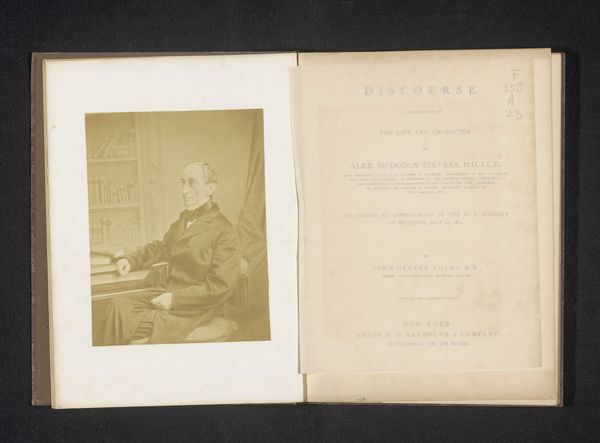
photography
#
portrait
#
photography
Dimensions: height 136 mm, width 93 mm
Copyright: Rijks Museum: Open Domain
Curator: This photographic print, "Portret van Alexandre Hesse," predates 1882 and captures its subject in a rather formal oval portrait. My immediate impression is of dignity and a certain detached worldliness, evident in the precise details of his attire and bearing. Editor: It's the kind of image that silently speaks volumes about class and respectability. You instantly grasp this was someone who operated within the established power structures of his time. He exudes bourgeois comfort, really. Curator: Precisely! We must remember how portraiture, particularly photography at this time, functioned as a social tool. These portraits affirmed identity and status. It's part of the visual language through which a social order maintained and displayed itself. Notice the quality of his suit. This speaks to his positionality. Editor: I think it's more interesting if we look closer at Alexandre Hesse. The image seems to appear as part of a biographical volume. That implies Hesse was notable and accomplished. And while that can be interpreted as affirmation of status quo, it also creates visibility and space for people. What did Hesse accomplish? What impact did he have? Curator: Finding information on Hesse requires additional historical research, and I appreciate the line of questioning. However, regarding visual culture, photographic portraiture was quite crucial in projecting ideals of leadership and intellectuality. It allowed people to present a desired public image and for institutions to reinforce specific standards for citizens to follow. Editor: Certainly, these images upheld specific narratives, and that is often something that should be pushed against. This man held privilege, whether he wielded that for social benefit or not, is always what lingers in my mind when I see images of men of the time. The aesthetic of the portrait may highlight an emphasis on individualism and intellectual authority, concepts linked heavily with Western European ideas of what’s important. Curator: The standardization and widespread availability of such photographic techniques made it a force for conveying authority and projecting power far beyond its aesthetic appeal, helping to solidify cultural expectations about leaders and respectable members of society. It certainly played a role in constructing concepts like manhood itself! Editor: Examining the broader historical, political, and personal implications of such images provides an opportunity to delve deeper into power and positionality, moving toward meaningful contemporary insights about equity. It’s a potent reminder about whose stories we tell, whose we omit, and how art functions as a powerful, yet subjective, tool for documenting societal change. Curator: It helps underscore how even simple portraits acted as public declarations. Editor: Yes, absolutely.
Comments
No comments
Be the first to comment and join the conversation on the ultimate creative platform.
